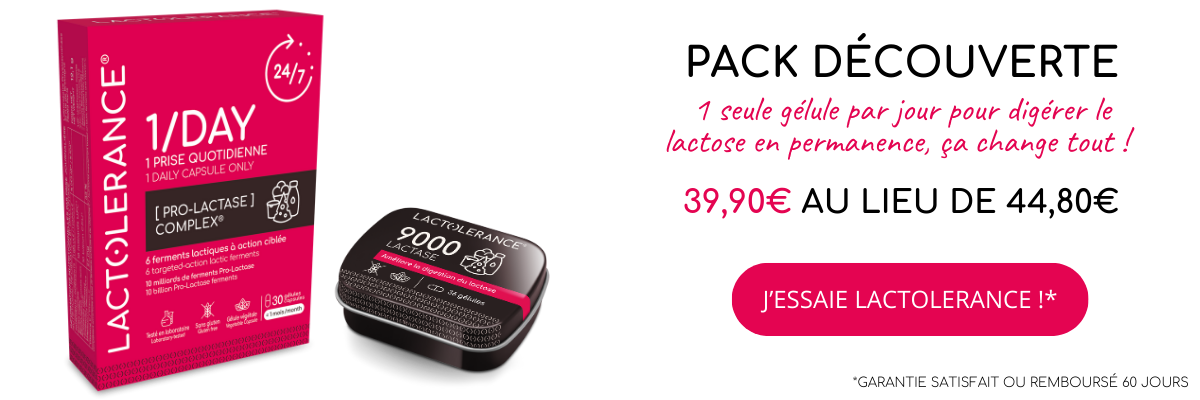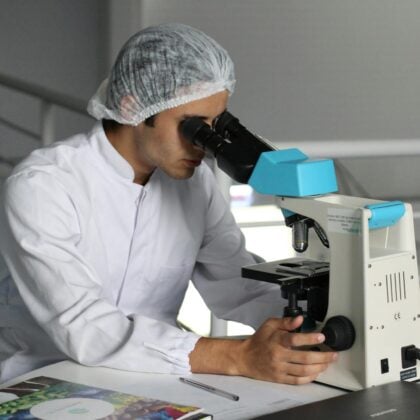
Intolerance to cow's milk, and more specifically to lactose, affects a large number of people throughout the world. This intolerance most often appears in adulthood, when our body produces less lactase. It should not be confused with the rarer cow's milk allergy, which can affect infants before disappearing naturally around the age of 3 or 4. However, the symptoms are difficult to understand, which makes the diagnosis all the more difficult.
So how do you know if a baby is intolerant or allergic to cow's milk and what to do about it? Here are some answers.
Lactose intolerance
Lactose intolerance is the inability of our bodies to digest lactose. sugar complex contained in milk. To be able to assimilate lactoseThis is done by an enzyme called lactase. However, as we grow older, most human beings produce less lactase. As a result, digestion of any food or dish containing lactose becomes more difficult. Lactose intolerance is in the majority worldwide: 75 % of the world's population is lactose intolerant! Signs of intolerance are most apparent in adulthood. Infants produce enough lactase to be able to assimilate milk (breast or cow's milk) until they are weaned. As they grow older, production of this enzyme diminishes, gradually reaching a residual level.
However, some babies cannot digest milk either: this may be a sign of allergy or intolerance.
Can a baby be intolerant or allergic to cow's milk?
Cow's milk is often used in the diet of newborns, especially when the mother does not want to or cannot breastfeed. This type of milk may contain proteins that the baby does not assimilate. In this case, the child's immune system, which is still immature, rejects them because it considers them harmful. This is known as milk protein allergy, also known as MVPA. This food allergy most often appears during the first few months of life and generally disappears around the age of 3 or 4.
It is important not to confuse allergy with intolerance. In the case of an allergy, cow's milk proteins cause an inflammatory response with the production of antibodies: the body reacts to an allergen by producing what is known as immunoglobulin E. The milk allergy is then referred to as IgE-dependent.
In the case of intolerance, the infant does not produce immunoglobulin E: this is known as non-LgE dependent milk intolerance.
There are therefore two different mechanisms. The most common pathology is lactose intolerance. In both cases, however, it is important to react, because a CMPA can affect the baby's growth and bone mineralisation, because the nutrients are not absorbed properly.
What are the symptoms of a cow's milk allergy?
Symptoms of allergy may appear within an hour of taking a bottle containing cow's milk. The baby may suffer from diarrhoea, stomach ache, colic, gas, reflux, constipation, nausea or vomiting. The baby's stools may contain blood, and he or she may also have a rash and swollen lips. In some cases, the baby wheezes and has difficulty breathing properly. A baby who cannot tolerate cow's milk may refuse to take a bottle, may cry for no reason and become irritable all day long. It is important to react, regardless of the symptoms. If the baby is allergic to cow's milk, the symptoms can go as far as angioedema and, in the most serious cases, anaphylaxis.
In the case of lactose intolerance, the symptoms are more exclusively digestive.
The above manifestations can vary considerably from one baby to another, and reactions can also be immediate or delayed.
How is a milk intolerance or allergy in babies diagnosed?
As you will have understood, there are many symptoms, which can vary from one child to another and be assimilated to other pathologies. The diagnosis of a milk intolerance or allergy is therefore complex to establish.
A doctor will begin by carrying out an interrogation which will enable him to understand the baby's diet, the various family histories, the child's behaviour and the occurrence of the various symptoms. He will also carry out a clinical examination.
There are also several tests to diagnose CMPA.
For lgE-dependent CMPA, doctors may suggest a cow's milk skin prick test. This is a skin test that gives results within 10 to 20 minutes. If the test is positive, the skin will show a small pimple (papule). The doctor may also recommend a blood test for specific IgE.
To establish lactose intolerance, the doctor may recommend a breath test, which will be carried out in hospital. To make a definitive diagnosis, the doctor may also recommend an eviction test by removing milk from the infant's diet.
What are the solutions to a baby's intolerance or allergy to cow's milk?
If CMPA is diagnosed, the doctor will recommend a strict avoidance of milk proteins in the baby's diet. He will also prescribe specific milks containing, for example, an extensive protein hydrolate or soya milk protein preparations (only after 6 months). There are also hypoallergenic milks that are prescribed as a preventive measure during the baby's first 6 months.

Hello, I'm Vincent
Like you, I'm lactose intolerantI know exactly what you're going through and the difficulties you encounter on a daily basis. For over 10 years, I've been helping our customers to use our dietary supplements and giving advice and tips on how to improve their digestive comfort. I'm also a keen cook and gourmet, so you'll find my favourite recipes for a lactose-free diet in this blog.
Lactose intolerance is not inevitable! With LACTOLERANCE you can digest with complete peace of mind






